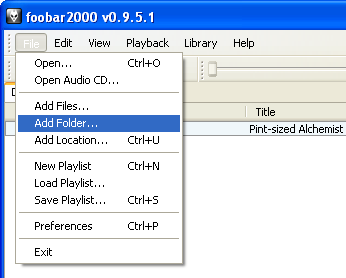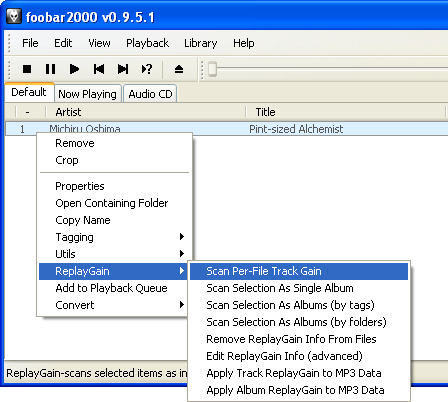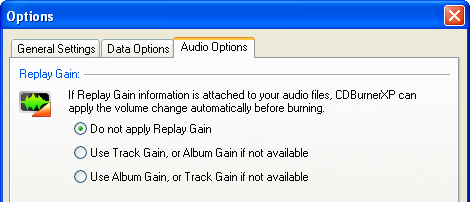KB7: Using Replay Gain
What is Replay Gain?
If you attach Replay Gain (in the following “RG”) information to a number of files, an RG-compatible audio player will be able to play them all at the same volume. So if you have tracks from different albums with different recording levels, you can “unify” these. The audio data itself is not altered by this method, so it is completely reversible.
Replay Gain information can only be used for burning audio discs currently.
How do I attach RG information to files?
There are various tools which allow you to do that. I'll use foobar2000 in this tutorial.
At first, start up foobar2000. Next, load a couple of audio tracks into the list. Do that by using the menu “File” –> “Add files…” or “Add folder…”.
After all your files are in the list, select them all (by either using Ctrl+A or “Edit” –> “Select all”), right click on a track and select either “Scan Per-File track gain” or “Scan selection as albums (…)”.
What's the difference between “per-file” (track gain) and “as albums” (album gain)? Album gain makes sure that the volume differences within an album will be preserved, track gain sets all files to the same volume.
How can I use Replay Gain?
This depends on the software you are using. You might have to configure it to use the RG information. In CDBurnerXP (starting at version 4.1) you can set the usage of RG in the settings dialog:
If one of the two lower options is set, CDBurnerXP will apply the volume change to all files (if RG information is present) before burning them to disc. Note that due to this preprocessing, compiling the audio image will take slightly longer.


